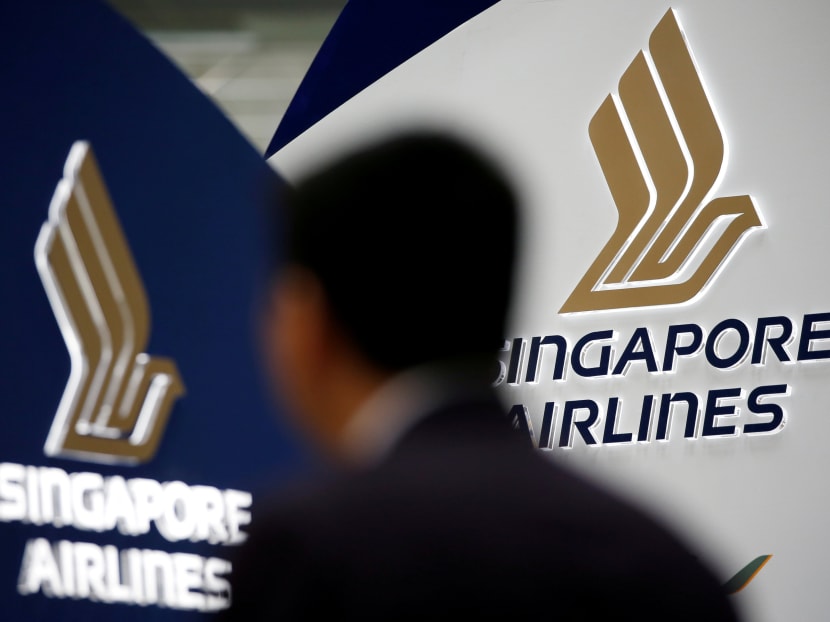Singapore Airlines restructuring: Some jobs may become irrelevant
SINGAPORE — Singapore Airlines (SIA) announced a major business transformation plan on Friday (May 19), entailing a review of all its business divisions and processes, after reporting an unexpected fourth-quarter net loss of S$138 million. This was the company’s first loss in five years.
SINGAPORE — Singapore Airlines (SIA) announced a major business transformation plan on Friday (May 19), entailing a review of all its business divisions and processes, after reporting an unexpected fourth-quarter net loss of S$138 million.
This was the company’s first loss in five years.
The flag carrier said it will be taking “bold radical measures”, with a focus on enhancing cost and service efficiencies to better position the company for long-term growth.
In response to queries on potential job losses as a result of the transformation drive, SIA chief executive officer Mr Goh Choon Phong said, “There will certainly be changes in the way we do things and staff will have to pick up new skills… Some of the current jobs would have to be redesigned because they may not be relevant anymore.”
He added that the company would be looking at ways to support its staff in retraining and redeployment.
According to Mr Goh, all aspects of the airline group’s businesses will be looked at including new areas of growth.
“The transformation is not just about how we can cut cost but also how we can generate more revenue for the group, how we can improve our processes more efficiently, …so that we can be lot more competitive going forward.”
“It will be a comprehensive review on whatever we are doing and how we can better position ourselves for growth,” Mr Goh added.
SIA has set up a “transformation office” comprising six full-time staff and a vice president, reporting directly to the CEO and guided by the company’s board. The airlines also said that a dedicated email contact has been created for the airline staff to give their suggestions and feedback.
“We have taken active steps to communicate that to all staff. We can expect lot more activities in this area including an organisational restructuring,” Mr Goh said.
According to analysts, SIA’s move to review and streamline operations is not surprising given the cut-throat competition within in the region and beyond, not to mention the impact on the airlines’ yields. The aggressive fare strategies of budget airlines as well as the Middle Eastern rivals have dented margins of legacy carriers like SIA.
“The region’s carriers operate in a very competitive environment. Business models that may have worked well in the past need updating,” said Mr Greg Waldron, Asia Managing Editor at FlightGlobal.
“The hub models of Cathay Pacific and SIA, for instance, were developed at a time when low cost carriers, Middle Eastern carriers, and Chinese hub carriers were not a major issue. These major competitive challenges demand that responsible management teams look at how to stay viable to ensure future growth,” said Mr Waldron.
“Take a look at what is happening at Cathay. There are job cuts at senior levels to reduce cost pressures,” said Mr K Ajith, director of Asia Transport Research at UOB Kay Hian.
Earlier this year, Hong-Kong based Cathay Pacific Airways launched a three-year overhaul to trim costs after reporting its first loss in eight years. The airline, according to reports, is targeting to save some 30 per cent in employee costs through job cuts and other organisational restructuring as part of the massive revamp.
SIA will have to manage its labour resources based on productivity, said Mr Ajith. The airline may see itself as having a high cost base and a need to be more cost effective in the increasingly competitive climate, he added.
“SIA and other airlines certainly need to adapt to the changing environment,” agreed Mr Brendan Sobie, analyst at the Centre for Aviation.
“Like most airlines, (SIA) is always looking at potential changes and has executives and staff reviewing its strategy and the way it does business. Creating a special office perhaps formalises this process and provides additional impetus to dig deeper and implement more changes,” Mr Sobie said.
TIMELINE: SIA CARGO OPERATIONS
SINGAPORE-Singapore Airlines (SIA) announced on Friday that SIA Cargo, a wholly-owned subsidiary of SIA will be re-integrated as a division within the SIA group. The process, aimed at improving efficiency, is expected to be completed in the first half of 2018.
Most of SIA Cargo’s nearly 900 employees will be retained in the new cargo division, while some will be transferred to other divisions, according to SIA CEO Mr Goh Choon Phong.
“We are retaining the business, hence, we will need most of the employees to continue operating our cargo business as a division of the airline,” Mr Goh told reporters on Friday.
The national carrier said in a media release there will be no change to SIA Cargo’s operations. Seven Boeing 747-400 Freighter aircraft will continue to be operated, while the Cargo Division will continue to manage the passenger aircraft ‘bellyhold’ space for SIA, SilkAir and Scoot.
In July 2001, SIA Cargo was hived off into a separate company within the SIA Group, given the strategy then was around growing its fleet to up to 17 747-400Fs.
“The airfreight market has since seen structural change, however, and SIA Cargo’s freighter fleet has been ‘right-sized’ in recent years to the current seven aircraft while the proportion of revenue from passenger aircraft ‘bellyhold’ capacity has increased significantly,” SIA said.
Despite the smaller freighter fleet, SIA Cargo’s overall capacity, including that from passenger aircraft, still grew at a range of 4 to 5 per cent in the past two financial years.







